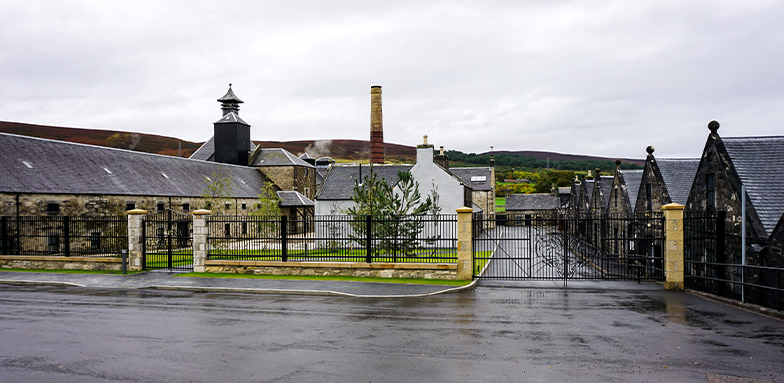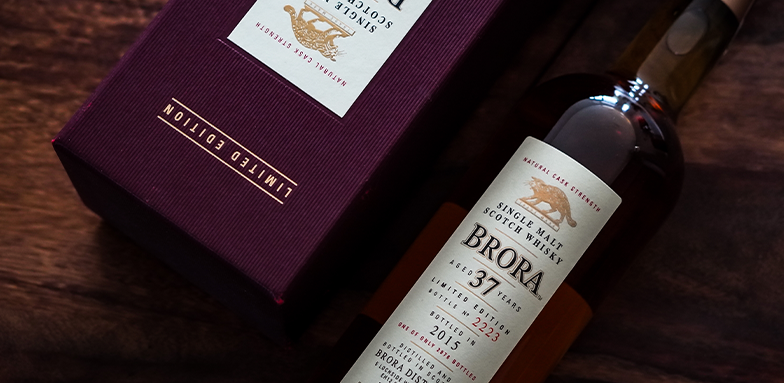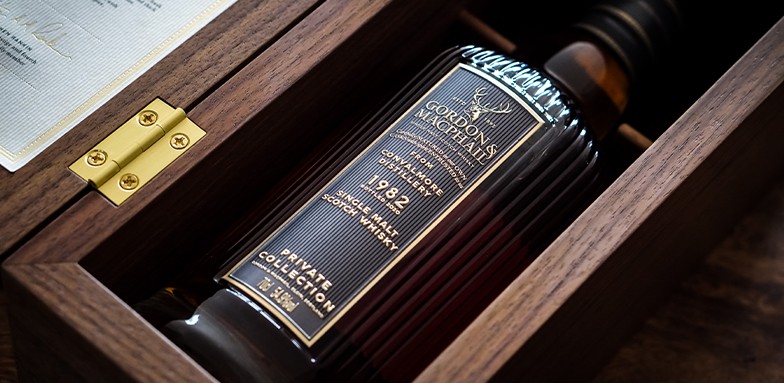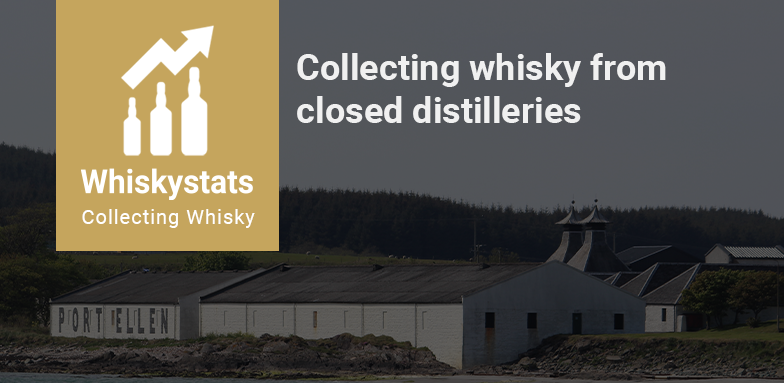Closed distilleries. Ghost distilleries. Silent distilleries. Whatever you call them, little else gets whisky collectors as excited. The heart wants what it can’t have.
Whisky is a fickle business. Over centuries, the total number of distilleries has gone up and down numerous times. For the most recent example of this boom-and-bust cycle, we must go back to the 1980s, the whisky industry’s era horribilis and the “Great Cull of 1983”, the most disastrous year in modern Scottish whisky history. DCL (known today as Diageo) closed 11 malt whisky distilleries and 1 grain distillery alone.

While their demise wasn’t especially mourned at the time, these lost distilleries have taken on an almost mythical reputation—some more than others. A distillery not producing anymore automatically increases the scarcity. It thus is a primary factor of what makes a whisky collectable. Neatly divided into tiers, here is the Whiskystats list of the most collectable closed distilleries.
Platinum Tier
Five distilleries deserve inclusion in the highest tier:
- Port Ellen. Without coincidence, Port Ellen also closed its doors in 1983. Like Brora, Port Ellen mainly produced whisky for blends. Owner Diageo closed one of its two Islay distilleries and kept the more modern Caol Ila. Nowadays, Port Ellen is one of the most highly regarded brands among collectors.
- Rosebank. A similar fate awaited Rosebank, which shut down in 1993. The reason, legend has it, was because Glenkinchie is located closer to Edinburgh and was thus deemed to offer more tourism potential. The closure of Rosebank led whisky writer Michael Jackson to utter, “If there is a God, it will surely one day reopen.”
- Brora. Brora’s original name was Clynelish, which would have confused when the new Clynelish distillery opened in the late 1960s. Brora operated under its new name until 1983 when this distillery in the Northern Highlands was mothballed.

Amazingly, this triumvirate of closed Scottish distilleries is getting a new lease on life. In 2017, it was announced that all three would reopen.
- Karuizawa. Karuizawa shut down in 2000, but its remaining stock was rescued and has slowly been released over the past two decades. (To much critical acclaim, we should add.) Some of the Karuizawa equipment was also rescued and is now used by Shizuoka. This new craft distillery is already beginning to turn heads.
- Hanyu. The Hanyu distillery tells a similar story as it was in production until 2000. However, in 2008, Ichiro Aktuo acquired the remaining mature stocks and the distillation systems. These are now used for the Ichiro’s Malt Whisky series, which is also highly desired by whisky collectors.
Gold Tier
The second tier is full of extraordinarily high-quality single malts. For various reasons, these still need to garner the lofty reputations of their Platinum-tier brethren.
- St. Magdalene. A Lowland distillery, St. Magdalene, fell victim to the Great Cull of 1983. Most of its production was destined for blends, but some were bottled under the St. Magdalene and Linlithgow brands. St. Magdalene has had great showings in the Rare Malts Collection series and Diageo’s Special Releases.
- Caperdonich. Initially known as Glen Grant 2, it was just across the road from its bigger sibling. It operated until 2002, when coppersmiths Forsyths bought the site. The magical Caperdonich 1972 vintage claims the highest praise.

- Glenugie, which also closed in 1983, never had enough stock to gain any real momentum, even though the calibre of the whisky was never in question. Some Glenugie bottles are iconic (especially those bottled by the pioneering Italian independent bottlers in the 1980s).
- Littlemill. Often considered an ugly duckling, Littlemill whisky only really fell into the favour of whisky enthusiasts after the distillery closed down in 1996. Independent releases revealed that Littlemill shines at 20+ years old. As the existing stock has dried up, auctions are often the best places to find Littlemill.
- Lochside. Vibrant fruitiness is the main characteristic of Lochside whiskies, in which they share similarities with Littlemill. Production stopped in 1992, and a few years later, developers demolished the distillery.
Silver Tier
Distilleries in this tier no doubt produced plenty of gold or platinum-quality whisky. Over time, however, the distilleries themselves are generally less highly regarded than those in the Platinum and Gold tiers.
- Glenlochy. Aside from the original maltings and kilns, all other buildings of Glenlochy have been demolished. Be on the lookout for cracking Glenlochy releases from Signatory Vintage, and owner Diageo’s releases are likewise nothing to sneeze at either.
- Convalmore. Once one of Dufftown’s famous seven stills, Convalmore main focus was always blends. Turns out its whisky deserved much more. This distillery’s waxy character can sometimes rival Clynelish’s, but the owners only made a little stock available.

- Glenury Royal. Closed just two years after Glenlochy, Glenury Royal never had much of a single malt presence in its day. The small handful included in Diageo’s Special Releases are especially notable.
- Ladyburn. Built within William Grant & Sons’ Girvan grain distillery in 1966, Ladyburn stopped production only nine years later. This whisky is desirable if only for its sheer scarcity.
- Imperial. Releases from Imperial are more common than most of the others mentioned above. Mothballed in 1998 and eventually demolished in 2013, Imperial gave way to the new Dalmunach distillery. Its owners only ever released a handful of official bottlings, never to much acclaim. However, independent bottlers have pushed Imperial to new heights.
True scarcity is one key to collecting whisky. And it doesn’t get much rarer than whisky from closed distilleries.
